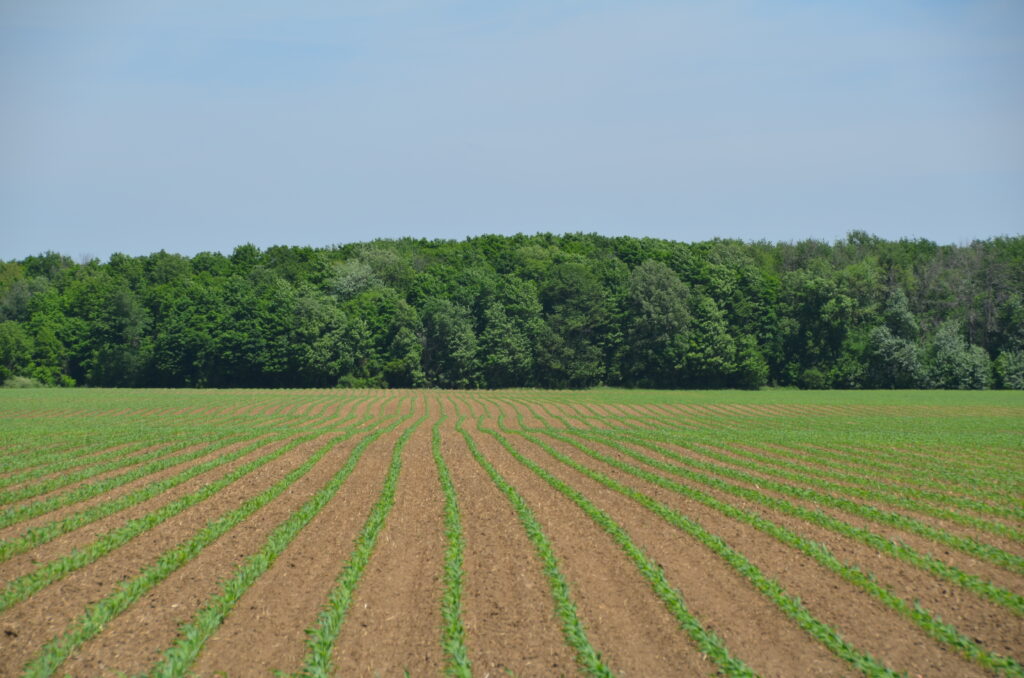Nitrogen fertilizer is one the most expensive inputs required for growing a corn crop, especially this year. And with conditions having turned dry in recent days, many growers are wondering about the risk of losses following N fertilizer application.
Nitrogen stabilizers are products that help to slow the conversion of nitrogen to forms that are susceptible to loss. Urease inhibitors (e.g. Agrotain) slow the transformation of urea to ammonium,which can convert to ammonia gas and be lost by volatilization. Nitrification inhibitors (e.g. Centuro or eNtrench) delay the conversion of ammonium to nitrate, which is the form of nitrogen vulnerable to loss by denitrification (conversion to nitrogen and nitrous oxide gas) or leaching. There are also combined urease and nitrification inhibitor products, such as SuperU or Excellis Maxx.
How do you know if you should be using a stabilizer?
- If you broadcast urea but it doesn’t get fully incorporated. If urea is not incorporated at all or not incorporated fully (e.g. you see a significant portion of fertilizer granules on the soil surface), the nitrogen is vulnerable to loss by volatilization. This is especially true under dry, warm conditions. Urease inhibitors can help protect that nitrogen and keep it in the urea form long enough for a significant rainfall (0.5 inch or more) to wash it into the soil.
- If you surface apply liquid nitrogen as a herbicide carrier, e.g. via a weed and feed program, without incorporation, you will likely benefit from a urease inhibitor. Again, this is particularly the case with dry, warm and breezy conditions.
- If you apply 100% of your nitrogen up front. It’s hard to predict what the weather will be in the weeks following planting. With the crop’s entire supply applied ahead of planting, well before peak corn demand, consider stabilizing your nitrogen and delaying its conversion to forms that are susceptible to loss. On soils prone to saturated conditions, using a combined urease and nitrification inhibitor may be beneficial.
Risk factors
High pH soils (>7) are at greatest risk of N loss by volatilization, as are lower CEC, coarse-textured soils1. Fine-textured soils, however, can still lose nitrogen this way. Urea application to a moist soil surface increases the risk – which is why a small rainfall after surface application is not helpful – as do higher soil temperatures.
Generally, the risk of N loss to denitrification will be greatest on heavier-textured soils, as they stay saturated for longer periods. The risk of loss by leaching is typically minimal in the growing season, except on the most coarse soil types.
Bottom Line
Given current weather conditions (warm, dry), the highest risk right now across most of Ontario is for volatilization. If you use any of the practices above and you have stabilized your nitrogen, it will provide added assurance. If you have not stabilized your nitrogen, consider if your application practices, soil type and weather conditions warrant the additional cost. Nitrogen stabilizers can be very effective when used in the right circumstances.
References
- Understanding Factors Controlling Ammonia Volatilization from Fertilizer Nitrogen Applications. Dari, C.W. Rogers and O.S. Walsh. University of Idaho Extension. Bul. 926. B. 2019. https://www.extension.uidaho.edu/publishing/pdf/BUL/BUL926.pdf
